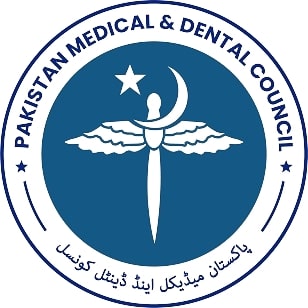Evaluation of serum electrolyte abnormalities in type II diabetic patients presenting in Gulab Devi hospital, Lahore
DOI:
https://doi.org/10.59058/jaimc.v21i4.205Keywords:
Type II Diabetes Mellitus (DM), Serum Electrolytes.Abstract
Background and Objectives: Patients with diabetes are more likely to experience electrolyte imbalances, which may be caused by an imbalance in the distribution of electrolytes. Impaired electrolytes balance in diabetics may lead to micro and macro vascular complications.The objective of this study is to investigate disturbances in serum electrolytes including Sodium (Na+), Potassium (K+) and Chloride (Cl) in Type II diabetics.
Methods: This was a descriptive cross-sectional study conducted over a period of 6 months. 3cc blood samples of 100 Type II diabetic patients were collected from diabetic OPD and medicine wards of Gulab Devi Chest Hospital Lahore and processed in Pathology lab of Gulab Devi Educational Complex to assess the electrolyte abnormalities in these patients using a predesigned proforma.
Results: Out of 100 samples of type II diabetic patients, there were 65 patients in which serum sodium levels were decreased. The mean levels of fasting blood sugar, serum sodium, potassium and choloride were 267.13±81.814 mg/dl, 130.13±5.408 meq/l, 4.0807±0.486meq/l and 99.053±4.5879 meq/l respectively.
Conclusion: In this study, serum sodium levels were significantly decreased in type II diabetic patients, while no significant alteration observed in serum potassium and chloride levels. Serum electrolytes should be routinely measured in diabetics to prevent complications.
Keywords: Type II Diabetes Mellitus (DM), Serum Electrolytes.
Downloads
Published
How to Cite
Issue
Section
License
Copyright (c) 2024 Faiza Javaid, Sahil Yaqoob, Hafiza Ammarah Sadiq, Muhammad Bilal, Muhammad Ijaz Bhatti, Ghazia Qasmi

This work is licensed under a Creative Commons Attribution 4.0 International License.
The articles published in this journal come under creative commons licence Attribution 4.0 International (CC BY 4.0) which allows to copy and redistribute the material in any medium or format Adapt — remix, transform, and build upon the material for any purpose, even commercially under following terms.
-
Attribution — You must give appropriate credit, provide a link to the license, and indicate if changes were made. You may do so in any reasonable manner, but not in any way that suggests the licensor endorses you or your use.
- No additional restrictions — You may not apply legal terms or technological measures that legally restrict others from doing anything the license permits.
The editorial board of the Journal strives hard for the authenticity and accuracy of the material published in the Journal. However, findings and statements are views of the authors and do not necessarily represent views of the Editorial Board. Many software like (Google Maps, Google Earth, Biorender (free version)) restricts the free distribution of materials prepared using these softwares. Therefore, authors are strongly advised to check the license/copyright information of the software used to prepare maps/images. In case of publication of copyright material, the correction will be published in one of the subsequent issues of the Journal, and the authors will bear the printing cost.










